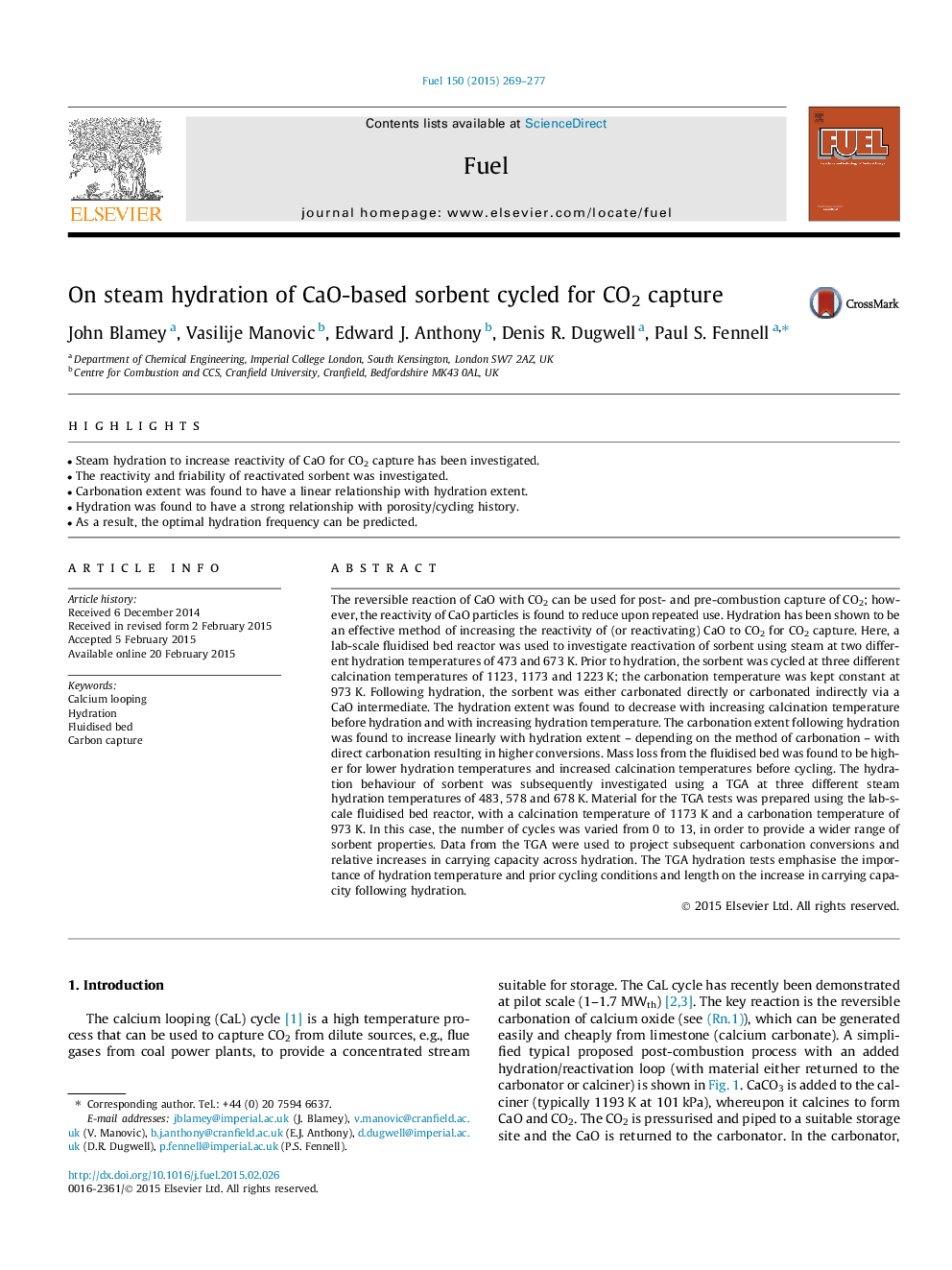| کد مقاله | کد نشریه | سال انتشار | مقاله انگلیسی | نسخه تمام متن |
|---|---|---|---|---|
| 205710 | 461123 | 2015 | 9 صفحه PDF | دانلود رایگان |

• Steam hydration to increase reactivity of CaO for CO2 capture has been investigated.
• The reactivity and friability of reactivated sorbent was investigated.
• Carbonation extent was found to have a linear relationship with hydration extent.
• Hydration was found to have a strong relationship with porosity/cycling history.
• As a result, the optimal hydration frequency can be predicted.
The reversible reaction of CaO with CO2 can be used for post- and pre-combustion capture of CO2; however, the reactivity of CaO particles is found to reduce upon repeated use. Hydration has been shown to be an effective method of increasing the reactivity of (or reactivating) CaO to CO2 for CO2 capture. Here, a lab-scale fluidised bed reactor was used to investigate reactivation of sorbent using steam at two different hydration temperatures of 473 and 673 K. Prior to hydration, the sorbent was cycled at three different calcination temperatures of 1123, 1173 and 1223 K; the carbonation temperature was kept constant at 973 K. Following hydration, the sorbent was either carbonated directly or carbonated indirectly via a CaO intermediate. The hydration extent was found to decrease with increasing calcination temperature before hydration and with increasing hydration temperature. The carbonation extent following hydration was found to increase linearly with hydration extent – depending on the method of carbonation – with direct carbonation resulting in higher conversions. Mass loss from the fluidised bed was found to be higher for lower hydration temperatures and increased calcination temperatures before cycling. The hydration behaviour of sorbent was subsequently investigated using a TGA at three different steam hydration temperatures of 483, 578 and 678 K. Material for the TGA tests was prepared using the lab-scale fluidised bed reactor, with a calcination temperature of 1173 K and a carbonation temperature of 973 K. In this case, the number of cycles was varied from 0 to 13, in order to provide a wider range of sorbent properties. Data from the TGA were used to project subsequent carbonation conversions and relative increases in carrying capacity across hydration. The TGA hydration tests emphasise the importance of hydration temperature and prior cycling conditions and length on the increase in carrying capacity following hydration.
Journal: Fuel - Volume 150, 15 June 2015, Pages 269–277